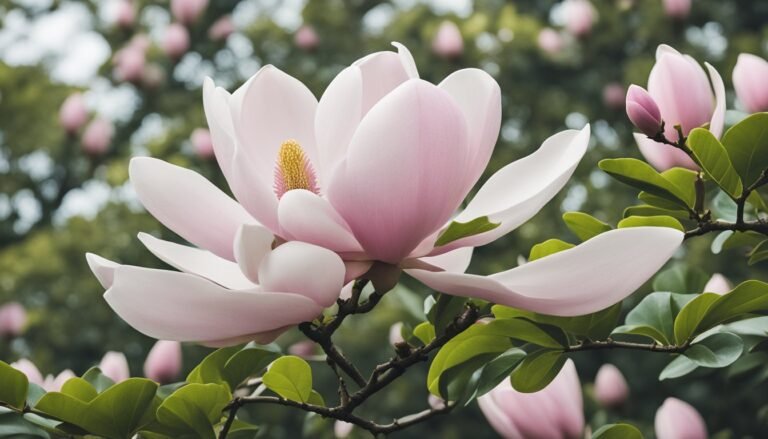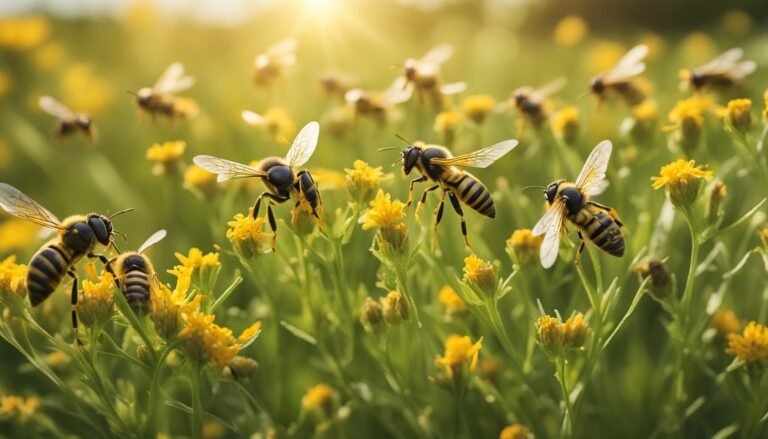Cultivating Vibrant Shrubs Successfully
The rhododendron is a diverse genus that encompasses over a thousand species of woody plants, many of which are known for their stunning flowers and foliage. They range from small, ground-hugging shrubs to large, tree-like specimens, with the majority enjoying cooler climates and mountainous regions. As members of the Ericaceae family, rhododendrons share some characteristics with azaleas, often leading to confusion between the two; however, they can be distinguished by certain botanical features, such as the number of stamens or the presence of scales. harvestday.ie

When introducing rhododendrons into a garden, understanding their preference for acidic soils and partial shade is crucial. These plants thrive in well-draining soil rich in organic matter and require consistent moisture without waterlogging. My experience in planting and caring for these plants has taught me that proper site selection and soil preparation are fundamental to their success. Care and maintenance vary by species, but generally, light pruning and protection from harsh sun and wind help maintain their health and enhance blooming.
Key Takeaways of How to Grow Rhododendron
- Rhododendrons are a vast genus with species that offer a range of sizes and flowers.
- They require acidic soil, partial shade, and well-drained conditions to thrive.
- Proper care includes site selection, soil preparation, and regular maintenance.
Classification and Species

In exploring the world of Rhododendron, I uncover a fascinating diversity within this genus that spans both the widely appreciated azaleas and the more classic Rhododendrons. This genus embodies a range of forms, from the deciduous to the evergreen, and is a prominent member of the Ericaceae family.
Rhododendron vs. Azalea
While commonly perceived as distinctly different, azaleas are, in fact, a subgenera within the genus Rhododendron. The primary difference lies in their flowers; azaleas typically have five stamens per flower, while other Rhododendron species have ten or more. Furthermore, azaleas are generally deciduous, whereas the Rhododendron species often referred to simply as ‘rhododendrons’ are evergreen.
Species Diversity
The genus Rhododendron is remarkably diverse, including about a thousand species. They flourish predominantly in the north temperate zone, with a concentration in the Himalayas where the moist acidic soil nurtures their growth. These species range from ground-cover shrubs to towering trees, adapting to a broad array of ecological niches.
Deciduous and Evergreen Varieties
The Rhododendron genus is partitioned into deciduous and evergreen categories. As I consider these varieties, I note that the evergreen species retain their leaves throughout the year and are often endowed with a leathery texture, while the deciduous species shed their leaves annually, and they often flaunt vivid autumn colours before they fall. This distinction aids gardeners and botanists alike in selecting species that best suit the landscapes they aim to enrich.
In meticulously classifying these plants, I appreciate the rich tapestry of Rhododendron species that paint our natural world with their blooms and foliage.
Planting and Growing Conditions
In my experience with rhododendrons, successful growth hinges on meeting their specific needs with regard to soil composition, light exposure, and moisture levels. Choosing the right planting time is also crucial for their establishment.
Soil Requirements
Rhododendrons thrive in well-drained, light and typically acidic soil. I make sure the soil has a pH between 4.5 and 6.0, which suits these acid-loving plants. If dealing with less acidic soils, incorporating sulphur or ericaceous compost will help to lower the pH. For planting in pots or containers, I opt for a potting mix specifically formulated for acid-loving plants.
Light and Exposure
While these plants can tolerate a range of lighting conditions, I have noted that they perform best in partial shade or dappled sunlight. Direct sunlight can sometimes scorch their leaves, especially in hotter climates. I find a spot that gets filtered sunlight—enough to foster bloom but not so much that it causes stress.
Watering and Humidity
Consistent watering is key, as rhododendrons require adequate moisture without being waterlogged. I water them regularly, ensuring the soil is moist but making certain that there is adequate drainage to prevent root rot. They also appreciate a humid environment, which I can achieve by mulching around the base to retain soil moisture and humidity levels.
Planting Time and Techniques
For planting, I recommend either early spring or early fall, avoiding periods of frost or the full heat of summer. This gives the plants time to establish roots without the stress of extreme temperatures. I dig a hole as deep as the root ball but twice as wide, set the plant in gently, and backfill with the appropriate acidic mix, taking care not to plant too deep as this might cause the roots to suffocate.
Care and Maintenance
Caring for rhododendrons involves consistent attention to pruning, fertilisation, and pest management to ensure they thrive. My approach is practical, promoting plant health and aesthetic appeal.
Pruning and Shaping
I prune rhododendrons in the late spring, following bloom, to maintain their shape and encourage vigorous growth. I remove dead flowers, being careful not to damage the new buds growing just below each flower. I also cut back any dead or diseased branches to healthy wood, which allows for better air circulation and light penetration.
Fertilisation and Mulching
I apply a special rhododendron-specific fertiliser in early spring to promote healthy blooms. This acid-forming fertiliser matches their need for a lower pH. Additionally, I mulch annually with a thick layer of pine needles or leaf mould to retain moisture, prevent weeds, and add organic matter.
Pests and Disease Management
Vigilance is key in managing pests and diseases which can afflict rhododendrons. I regularly inspect for symptoms like leaf spots, wilting, or distortion, which indicate potential issues. To control pests, I prefer using environmentally friendly options like horticultural oils and soaps, whenever possible.
Propagation and Cultivation

Rhododendrons are versatile plants, and I find propagating them to be a rewarding experience. With appropriate techniques such as cuttings, layering, or seeds, you can effectively cultivate new plants and expand your garden’s beauty. These methods vary in difficulty and time to success, suiting different levels of gardening expertise.
Propagating from Cuttings
I often propagate rhododendrons by taking semi-ripe cuttings during the late summer. The cuttings should be about 10-15 cm long and include several leaf nodes. I dip the cut end in rooting hormone to increase the chances of successful rooting. It’s essential to keep the cuttings moist and in indirect light until they root, which can take several weeks to a few months.
Layering Method
When I use the layering method, I select a flexible branch and bend it to the ground, making a small notch or wound on the part of the branch that will be buried. This encourages root growth. I secure the branch in place with a wire or a rock and cover it with soil. Roots usually develop by the following season, allowing me to sever the new plant from the parent.
Growing from Seed
Growing rhododendrons from seeds is a longer process but allows for the cultivation of a vast range of cultivars. Seeds require a fine, soil-less compost and a controlled environment, such as a greenhouse. They germinate best with high humidity and a temperature around 20°C. Seedlings can be susceptible to damping off, so I maintain good air circulation and avoid overwatering.
Frequently Asked Questions

In this section, I provide insights into some of the most common inquiries about rhododendrons, offering practical advice and clear guidance to help you care for these beautiful shrubs effectively.
How can you address common problems in rhododendrons?
To tackle common issues such as root rot or pests, ensure good drainage and avoid overwatering. To prevent diseases like powdery mildew, maintain air circulation around your plants. For pest infestations, use targeted treatments like insecticidal soap for aphids.
What are the best practices for growing rhododendrons in pots?
Choose a container with ample drainage holes and use ericaceous compost specific for acid-loving plants. For potted rhododendrons, regular watering is essential to keep the soil consistently moist without becoming waterlogged.
When and how should rhododendrons be pruned?
Prune rhododendrons immediately after flowering to maintain their shape and encourage bushier growth. Remove dead or overgrown branches by cutting just above a set of leaves or a latent bud.
What are effective methods for caring for rhododendrons during winter?
Mulch the base with pine bark or leaves to protect the roots from freezing temperatures. If you face severe winters, wrap the plants in burlap, especially for newly planted or fragile varieties.
Which species of rhododendron are most suitable for a small garden?
Compact varieties like Rhododendron ‘Ramapo’ or Rhododendron ‘Dora Amateis’ are ideal for small gardens, offering beautiful blooms without taking up much space. They thrive when planted with sufficient room for root expansion and adequate sunlight.
To what extent are certain substances harmful to rhododendrons?
Rhododendrons can be sensitive to alkaline substances, resulting in chlorosis and poor health. Ensure your soil is acidic, and avoid applying lime or fresh manures that may contain harmful salts or raise the pH level.



